Find the ratio of the periods of the two torsion pendula shown in figure. The two differ only by the addition of cylindrical masses as shown in the figure. The radius of each additional mass is 1/4 the radius of the disc. Each cylinder and disc have equal mass.
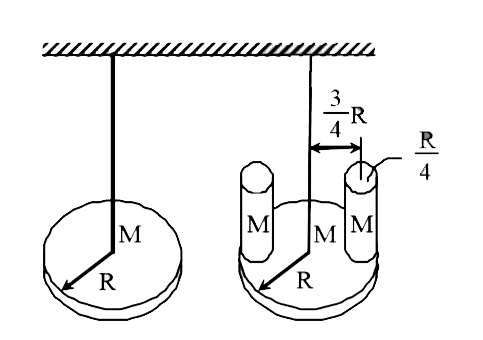
(23)3/2
(32)3/2
(23)1/2
(32)1/2
The correct Answer is:A
Step by step video & image solution for Find the ratio of the periods of the two torsion pendula shown in figure. The two differ only by the addition of cylindrical masses as shown in the figure. The radius of each additional mass is 1/4 the radius of the disc. Each cylinder and disc have equal mass. by Physics experts to help you in doubts & scoring excellent marks in Class 12 exams.
Updated on:21/07/2023Topper's Solved these Questions
- SIMPLE HARONIC MOTION Book:MOTIONChapter:SIMPLE HARONIC MOTION Exercise:EXERCISE -2 (Leve-I) ( SECTION - H ) (Combination of two or more SHM)
Explore 1 Video
- SIMPLE HARONIC MOTION Book:MOTIONChapter:SIMPLE HARONIC MOTION Exercise:EXERCISE -2 (Leve-I I) ( SECTION - A ) (– Equation of SHM, Velocity and Acceleration in SHM, Energy of SHM)
Explore 3 Videos
- SIMPLE HARONIC MOTION Book:MOTIONChapter:SIMPLE HARONIC MOTION Exercise:EXERCISE -2 (Leve-I) ( SECTION - E,F ) (Angu lar shm & s imple pendulum)
Explore 8 Videos
- SIMPLE HARMONIC MOTIONBook:MOTIONChapter:SIMPLE HARMONIC MOTIONExercise:EXERCISE -3 Section - B Previous Year Problems | JEE MAIN
Explore 23 Videos
- SOUND WAVESBook:MOTIONChapter:SOUND WAVESExercise:Exercise - 3 (Section - B)
Explore 14 Videos
Similar Questions
The two torsion pendula differ only by the addition of cylindrical masses as shown in the figure. The radius of each additional mass is 1/4 the radius fo the disc. Each cylinder and disc have equal mass. The ratio of time periods of the two torsion pendula is p. Then 27p2 is.
_E01_110_Q01.png)
View SolutionTwo uniform thin rods each of length L and mass m are joined as shown in the figure. Find the distance of centre of mass the system from point O

View Solution
Knowledge Check
Find the position of center of mass of the uniform lamina shown in figure, if small disc of radius a2 is cut from disc of radius a.
 A(−a6,a)B(−a2,0)C(−a6,0)D(−a3,0)
A(−a6,a)B(−a2,0)C(−a6,0)D(−a3,0)Two blocks each having a mass M are placed as shown in the figure. The accleration of the system is:-
 A0Bgsinθ2CgsinθD2gsinθ
A0Bgsinθ2CgsinθD2gsinθ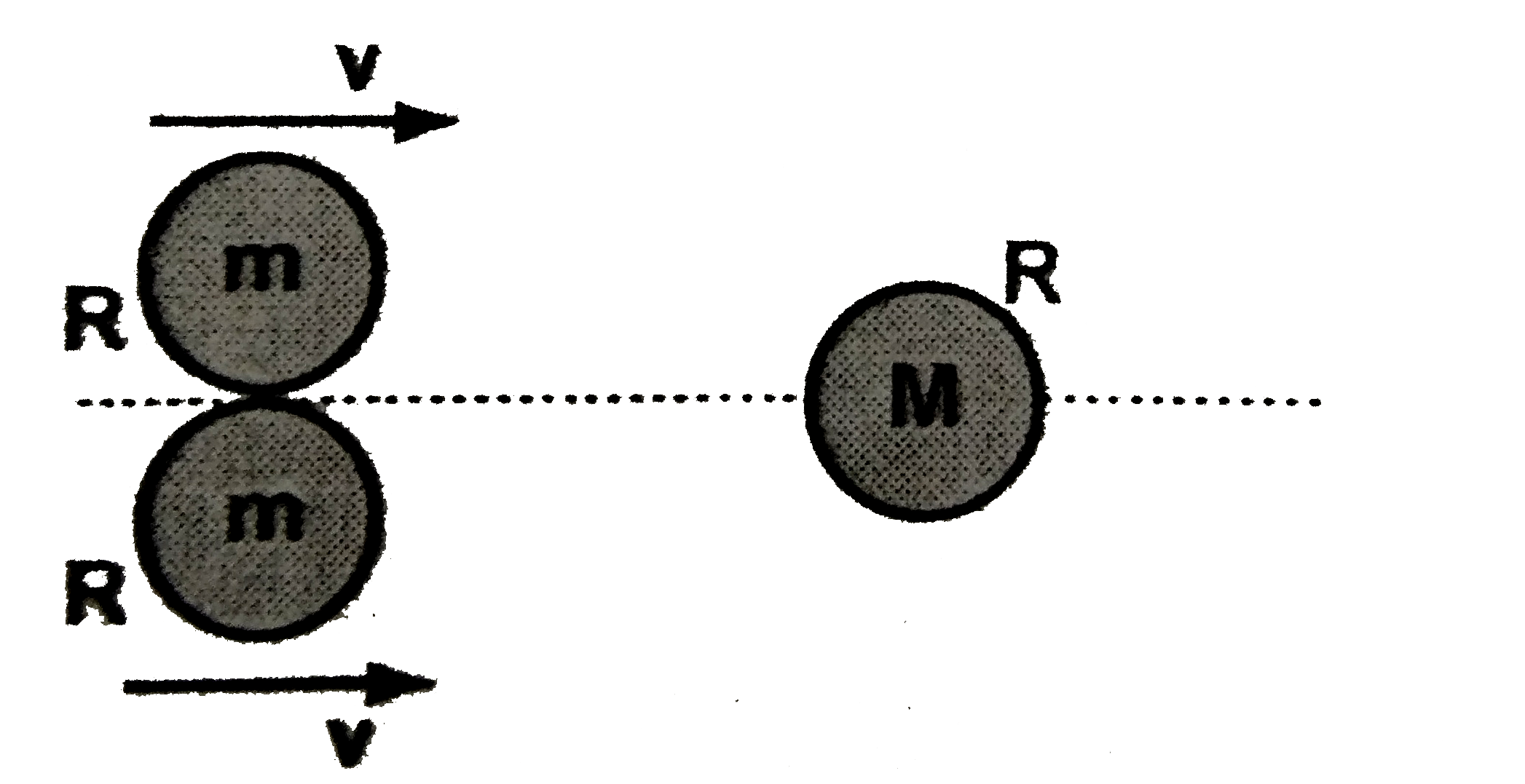
Two identical discs of mass m and of radius R touch each other and move with the same velocity perpendicularly to the line segment which joins their centres of mass, along the surface of a horizontal smooth tabletop. There is a third disc of mass M and of radius R at rest, at a point on thhe perpendicular bisector of of the line segment joining the centres of mass of the two moving discs as shown in the figure. The two moving discs collide elastically with the third one, which is at rest there is no friction between the rims of the discs. What should the ratio of M/m be in order that after the collision the two discs of mass m move perpendicularly to their intial velocity?A3B2C√3D√2
The figure shows a disc of radius 3R from which a circular hole of radius R is cut as shown in the figure. The distance of the centre of mass of the remaining object from the point O is

View SolutionA disc of mass M and radius R moves in the x-y plane as shown in the figure. The angular momentum of the disc at the instant shown is –
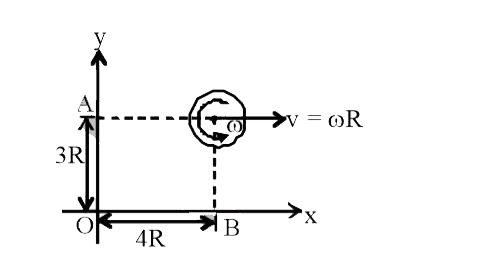
View SolutionFind the centre of mass of the disc shown in figure. . A square is removed from the disc as shown
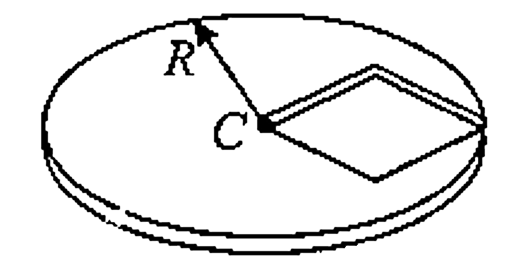
View SolutionFron a sqaure plate of side a,a quarter circular disc of radius a is removed as shown in figure. Find the coordinates of centre of mass of the remaining part.
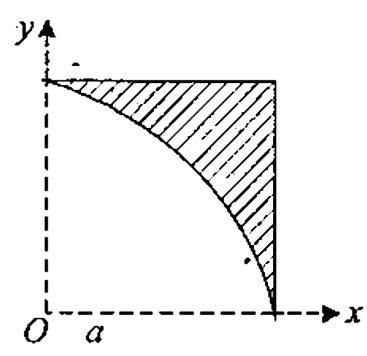
View SolutionA disc of mass M and radius R moves in the x-y plane as shown in the figure. The angular momentum of the disc at tihe instant shows is
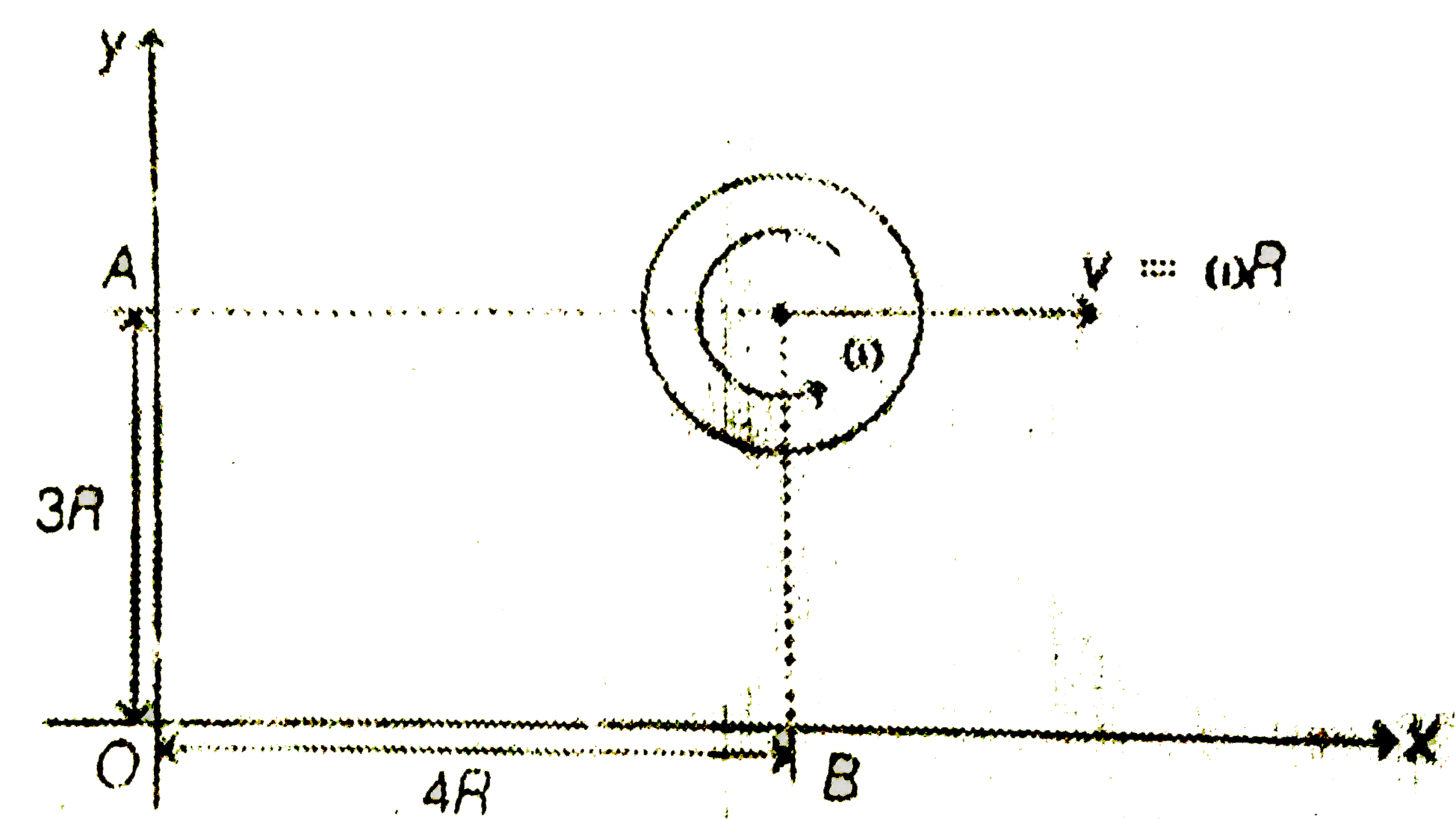
View Solution